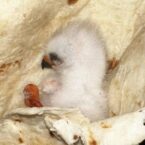Dinosaur fossils could belong to the world’s largest ever creature
Discovering dinosaur fossils is always a great event as they have been extinct for so long, the only thing the world knows about them is thanks to science. Patagonia is known for its amazing scenery, but paleontologists also consider it a hub for fossils as major discoveries happened there over the years.
In a recent article published by the Cretaceous Research, evidence was presented of a new find in Argentina, at the Neuquen Province which is in the northwest of Patagonia. The years of excavation resulted in a set of bones (vertebrae and pelvic bones) that once belonged to a giant sauropod that might have been the largest animal to live on our planet.
The fossils have been found in the Candeleros Formation which is a sedimentary rock and was formed 98 million years ago, also known as the Upper Cretaceous epoch.
There was a gap of 3 years between the discovery of the fossils and the start of their excavation in 2015, but so far, the team working on the site has found 24 vertebrae, all belonging to the sauropod’s tail.
The excavations are still ongoing and paleontologists all over the world are eagerly waiting for the rest of the story to unveil.
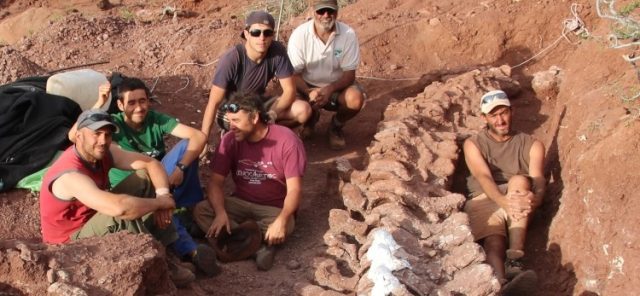 The dig team uncovering fossils of the 98 million-year-old titanosaur in Neuquén Province, Argentina. (Photo: Alejandro Otero and José Luis Carballido/CONICET)
The dig team uncovering fossils of the 98 million-year-old titanosaur in Neuquén Province, Argentina. (Photo: Alejandro Otero and José Luis Carballido/CONICET)
In the Patagonia region of Argentina, paleontologists have discovered vertebrae from what may be the largest animal to ever walk the earth.
Stuck in sediment dating to the Upper Cretaceous period about 98 million years ago, the fossil appears to be a titanosaur—a type of sauropod dinosaur.
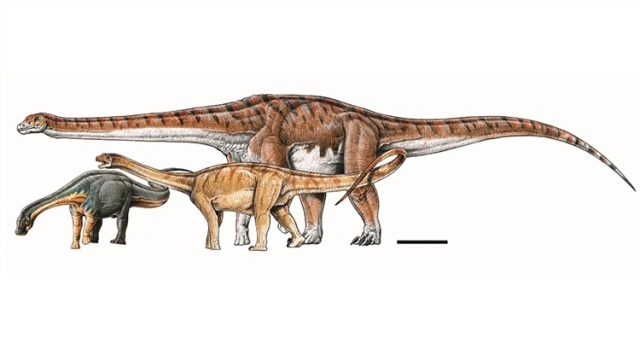 The new Titanosaurus found in Patagonia compared to Andesaurus and Limaysaurus, two other species. (Illustration: Gabriel Lio/CONICET)
The new Titanosaurus found in Patagonia compared to Andesaurus and Limaysaurus, two other species. (Illustration: Gabriel Lio/CONICET)
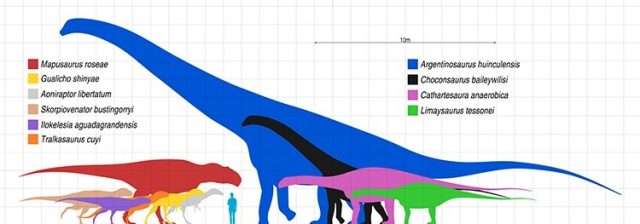 Comparative dinosaur sizes based on examples found in the Huincul Formation of Neuquén Province. (Photo: Wikimedia Commons [Public domain])
Comparative dinosaur sizes based on examples found in the Huincul Formation of Neuquén Province. (Photo: Wikimedia Commons [Public domain])
As researchers excavate more of the skeleton, science will learn more about this colossal animal.
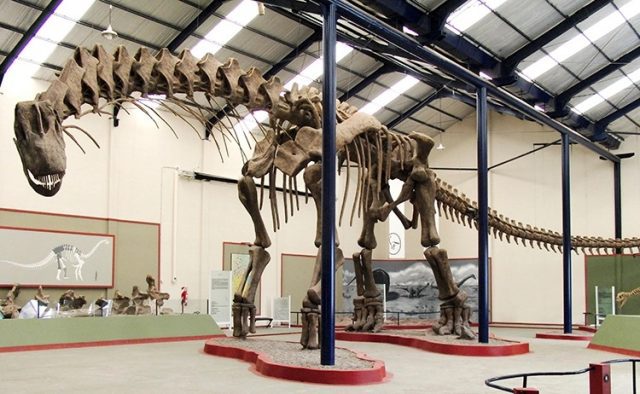 An Argentinosaurus huinculensis fossil at the Museo Municipal Carmen Funes in Neuquén, Argentina. (Photo: William Irvin Sellers, Lee Margetts, Rodolfo Aníbal Coria, Phillip Lars Manning via Wikimedia Commons [CC BY 2.5])
An Argentinosaurus huinculensis fossil at the Museo Municipal Carmen Funes in Neuquén, Argentina. (Photo: William Irvin Sellers, Lee Margetts, Rodolfo Aníbal Coria, Phillip Lars Manning via Wikimedia Commons [CC BY 2.5])













